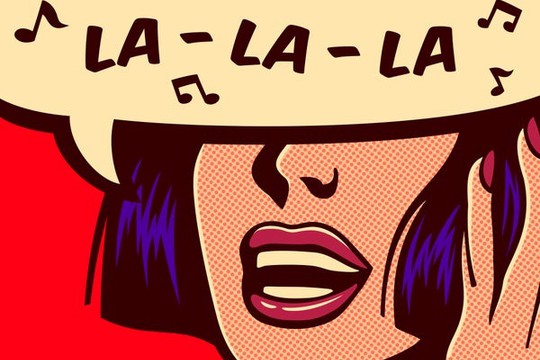Drante/Getty Images
Can statistics explain the decline of modern music? – asks ‘The American Conservative’.
A team led by artificial intelligence specialist Joan Serra at the Spanish National Research Council ran music from the last 50 years through some complex algorithms and found that pop songs have become intrinsically louder and more bland in terms of the chords, melodies and types of sound used.
“We found evidence of a progressive homogenization of the musical discourse,” Serra told Reuters. “In particular, we obtained numerical indicators that the diversity of transitions between note combinations – roughly speaking chords plus melodies – has consistently diminished in the last 50 years.”
They also found the so-called timbre palette has become poorer. The same note played at the same volume on, say, a piano and a guitar is said to have a different timbre, so the researchers found modern pop has a more limited variety of sounds… Intrinsic loudness is the volume baked into a song when it is recorded, which can make it sound louder than others even at the same volume setting on an amplifier.
Listen to an FM radio for a half hour nowadays and you’ll start to sympathize with the researchers’ case. But you should take their findings with a grain of salt for several reasons.
First, they use a selection of recordings from 1955 to 2010 from the Million Song Dataset (if you want to take a look at a list of the songs included, here it is.).
It also draws attention to the convergence of different forms of modern commercial music–country, hip-hop, radio rock–on the same set of production techniques and aesthetic values
When comparing today’s hit tunes with the top 40 of past decades, strong opinions are never in short supply. Every generation seems to lament its successor’s musical tastes and listening habits. Though science can’t necessarily account for such subjective preferences or generational divides, new research suggests popular music has indeed undergone some measurable and significant shifts over the past 50 years—with popular song lyrics becoming simpler and more repetitive, according to a study published in Scientific Reports.
“There’s more rhyming lines and also more chorus,” says the study’s senior author Eva Zangerle, a computer scientist at Austria’s University of Innsbruck, who has developed music recommendation algorithms. “We basically found that lyrics [have gotten] easier to comprehend.” This trend, observed across five of the most popular English-language music genres (pop, rock, rap, R&B and country) since 1970, hints at how shifts in music listening habits, platforms and production may be shaping pop culture.
Zangerle and her co-authors compiled lyrics from 353,320 well-known songs released between 1970 and 2020. They used machine learning to single out these songs’ key linguistic features, such as the ratio of repeated words, the types of emotional cues, a readability score and the richness of vocabulary. Then they developed and trained additional models to sort and analyze those features across years in a representative subset of 12,000 songs.
The researchers discovered that the ratio of repeated to nonrepeated lines has ticked up across genres over the years, nearly doubling for pop songs and rising even more rapidly for rap music. The ratio of choruses to other song sections rose as well. The study also found that contemporary music lyrics convey more negative emotions and fewer positive ones than in the past and that songs have become more personal, with a higher frequency of pronouns such as “I” and “me” — echoing past research findings about shifts in lyrical content.
“I thought this study was really cool,” says Michael Varnum, a cultural psychologist at Arizona State University, who was not involved in the new research. Varnum has previously studied popular music and detected similar declines in lyrical complexity over time. This new work replicates those findings with a more inclusive sample, he says, by surveying an order of magnitude more songs, comparing across genres and looking beyond the biggest chart-toppers to assess the larger landscape of what people listen to.
Yet even this study’s expansive dataset isn’t completely comprehensive. Its focus on English-language songs — compiled from the online platform Genius — means it is inherently biased toward the Western cultural canon, Zangerle says.
Emotional intention and meaning, too, are hard to parse from lyrics alone, says Robin James, an independent popular music and philosophy scholar. James points out that slang terms such as “slay” might appear angry or violent in an automated assessment but actually convey a positive emotional meaning. Even complexity is challenging to quantify, she adds. Lyrics that seem like simple gibberish at first can actually be clever wordplay, James points out, noting Missy Elliot’s backward lines in the 2002 hit song “Work It.”
And lyrics are just one small part of what makes up a song, says Kaleb Goldschmitt, an ethnomusicologist at Wellesley College and co-editor of the Journal of Popular Music Studies. Even if lyrics are getting simpler, musical factors such as texture and rhythm seem to be getting more complex, Goldschmitt says.
read more in our Telegram-channel https://t.me/The_International_Affairs

 10:23 07.04.2024 •
10:23 07.04.2024 •























